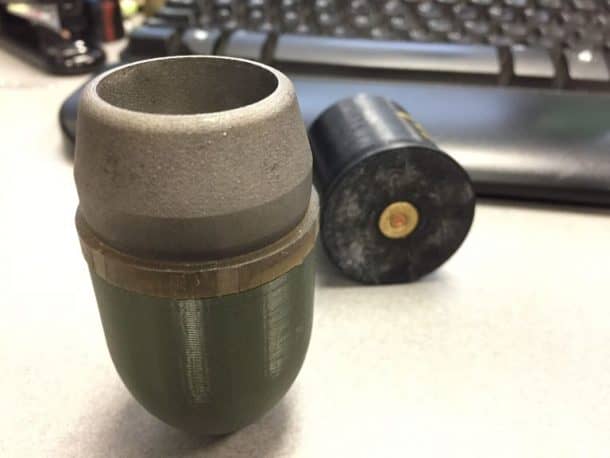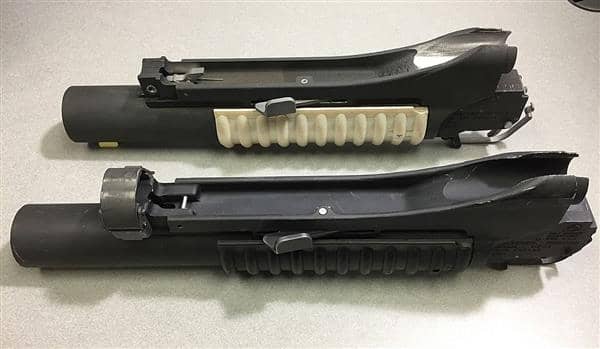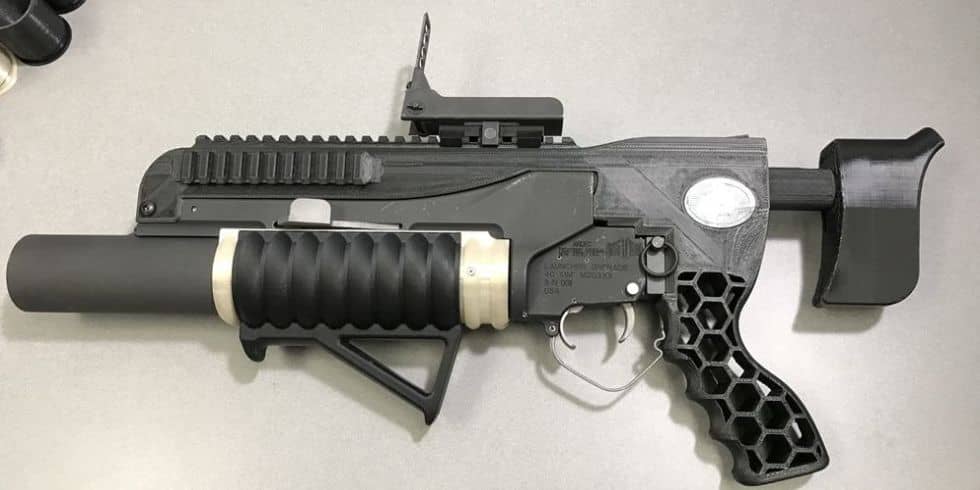Ever since 3D printing became mainstream, many people have considered printing guns, and now, there are plenty of such products. The concept of a 3D printed gun would perhaps not amaze you much, however, when it comes to a 3D printed grenade launcher, even you would be willing to know more.
The United States Army has recently, 3D printed a grenade launcher which looks more like an assault rifle from a video game, but in reality, it is no toy. The launcher has been named RAMBO, a very apt name if it makes you think of Sylvester Stone, but this is not why it is named so. RAMBO is an acronym for Rapid Additively Manufactured Ballistics Ordnance.

Source: US Army
The development of RAMBO took the US Army Research almost six months while they were teamed with some other agencies. The 40-millimeter launcher resembles the design of M203 under-barrel grenade launcher. The weapon is made up of 50 parts, all of which were 3D printed out of steel, aluminum and other materials except springs and fasteners. Obviously, the explosives were not printed, but the rounds were.

The weapon was first tested in October with positive results. The US Army describes the performance as:
The testing included 15 test shots with no signs of degradation. All the printed rounds were successfully fired, and the printed launcher performed as expected. There was no wear from the barrel, all the systems held together and the rounds met muzzle velocities within 5 percent of a production M781 fired from a production-grade grenade launcher. The variation in velocities were a result of the cartridge case cracking, and the issue was quickly rectified with a slight design change and additional 3-D printing.
The technology has immense potential, enabling armies to 3D print their weapons in shorter times customized to the need of the mission. The Additive manufacturing technology even allows a design change during the production process.

The dark side of the success of such technologies is that if they found their way into the hands of any potential terrorists; the world would inevitably turn messier than it is now. It is probably a relief that the technology is immensely expensive, costing millions of dollars.
What are your thoughts regarding this futuristic technology? Comment below!


